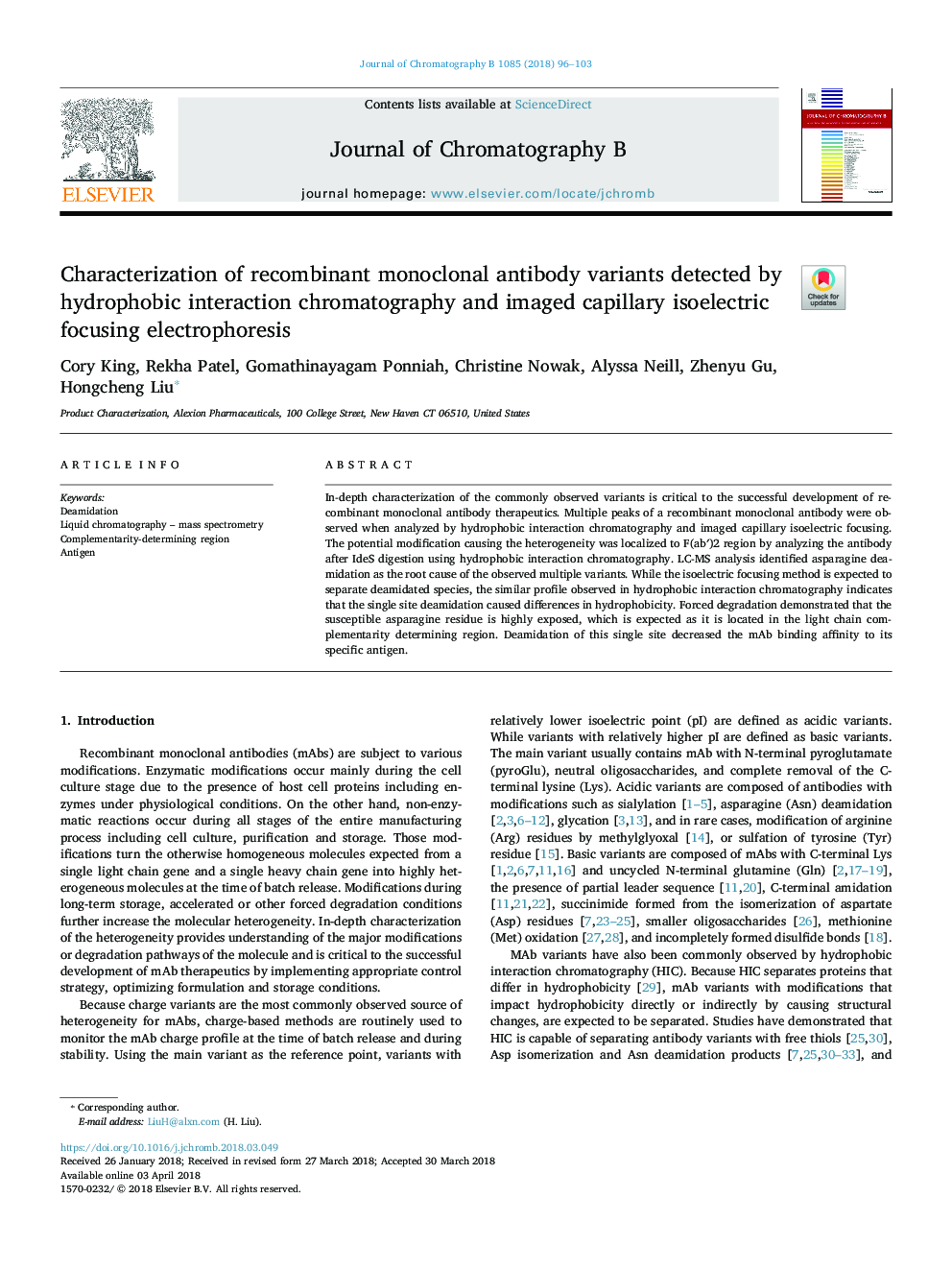| Article ID | Journal | Published Year | Pages | File Type |
|---|---|---|---|---|
| 7615091 | Journal of Chromatography B | 2018 | 8 Pages |
Abstract
In-depth characterization of the commonly observed variants is critical to the successful development of recombinant monoclonal antibody therapeutics. Multiple peaks of a recombinant monoclonal antibody were observed when analyzed by hydrophobic interaction chromatography and imaged capillary isoelectric focusing. The potential modification causing the heterogeneity was localized to F(abâ²)2 region by analyzing the antibody after IdeS digestion using hydrophobic interaction chromatography. LC-MS analysis identified asparagine deamidation as the root cause of the observed multiple variants. While the isoelectric focusing method is expected to separate deamidated species, the similar profile observed in hydrophobic interaction chromatography indicates that the single site deamidation caused differences in hydrophobicity. Forced degradation demonstrated that the susceptible asparagine residue is highly exposed, which is expected as it is located in the light chain complementarity determining region. Deamidation of this single site decreased the mAb binding affinity to its specific antigen.
Keywords
Related Topics
Physical Sciences and Engineering
Chemistry
Analytical Chemistry
Authors
Cory King, Rekha Patel, Gomathinayagam Ponniah, Christine Nowak, Alyssa Neill, Zhenyu Gu, Hongcheng Liu,
